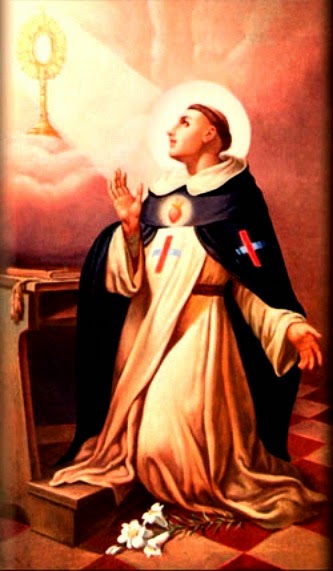St. Elizabeth of Hungary: Widow, "Mother of the Poor"
 In her short life Elizabeth showed such great love for the poor and suffering that she has become the patroness of Catholic charities and of the Secular Franciscan Order.
In her short life Elizabeth showed such great love for the poor and suffering that she has become the patroness of Catholic charities and of the Secular Franciscan Order.Born in Bratislava in 1207, Princess Elizabeth, the daughter of King Andrew of Hungary was betrothed at the age of four to Prince Ludwig of Thuringia (in central Germany) and sent to live at his father's court. They were married when she was fourteen and he was twenty - one. She loved him deeply and bore him three children.
In addition to caring for her children, Elizabeth was devoted to the poor, the sick, and the aged. Seeking to become one with the poor, she wore simple clothing. Daily she would take bread to hundreds of the poorest in the land, who came to her gate. She grew in piety under the spiritual direction of a Franciscan Friar.
Once when she was taking food to the poor and sick, Prince Ludwig stopped her and looked under her mantle to see what she was carrying; the food had been miraculously changed to roses.
On another occasion, she took in a dying leper and placed him in the couple's own bed. Ludwig was furious about this and when he turned back the sheets and saw the figure of the leper, he realized that he was witnessing the literal embodiment of Christ ("Whatever you do for the least of my brothers that you do unto me." Matthew 25: 40b).
Their happy marriage ended in 1225 when Ludwig died in the Crusades. Following his death, the husband's family viewed Elizabeth as squandering the royal purse and threw her out. Her royal aunt and uncle made a castle available to her and set about making plans for a second marriage for her. However, she followed God's calling to renounce her position and enter into a new life.
On Good Friday 1228, Elizabeth became a Third Order Franciscan, sold all that she had, and worked to support her children. She settled into a small house that she herself had built and attached a hospital to it, which she founded in honor of St. Francis. Here she spent the few remaining years of her life caring for the sick, the poor, and the elderly. Penance, prayer, and practical charity filled her hours.
Her gifts of bread to the poor, and of a large gift of grain to a famine - stricken Germany, led her to become patron of bakers. St. Elizabeth is also the patron saint of countesses, the death of children, the falsely accused, the homeless, nursing services, Catholic charities, widows, and young brides.
St. Elizabeth died in extreme poverty at the age of 24 in 1231 and was canonized in 1235.
Image: Edmund Blair Leighton (1853-1922)
The Charity of St. Elizabeth of Hungary
Oil on canvas
Collection of Fred and Sherry Ross




jean, your patron saint for 2009 is Saint Barbara
ReplyDelete